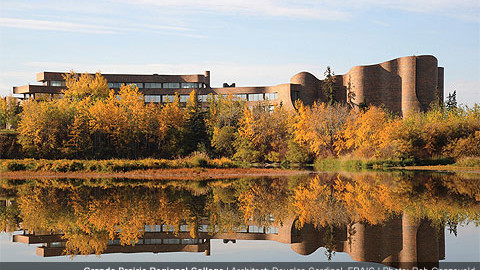Douglas Cardinal is one of Canada’s most renowned architects. He has designed numerous buildings over the past 50 years, including schools, health centers, museums, theaters, administrative offices, churches, hotels, houses, industrial buildings and community plans across Canada and the US. Much of his work is influenced by his Metis Blackfoot/Kainai aboriginal heritage, and many projects have been for aboriginal communities. His designs typically reflect the landscape around them, so that people can feel they are part of the land.
Some of his more notable projects include the Canadian Museum of History in Gatineau, Quebec, the First Nations University of Canada, the National Museum of the American Indian in Washington and he is currently commissioned to design a student center at the University of Saskatchewan.
In a recent interview, he speaks about his inspiration for design. How buildings should be built for the people who occupy those spaces. His philosophy is that buildings should be uplifting – which attracted business. One of his most respected projects was the Grande Prairie Regional College (pictured), which he completed in 1976.
“If I’m designing a school, I rather talk to the students and the teachers and build a foundation of design from the people who are in those spaces. People outside of that have very little understanding of what is happening in that classroom. This is where I find division coming from the user and if we talk to the people in our city and become inspire by their vision of their city and what they want in our city, its a good foundation to start in terms of providing them spaces that would be much more harmonized within its surrounding natural environment. “
As an educational consultancy, we at Ednastics are poised to assist in the development of state-of-the-art learning institutions in the Arabian Gulf and East Africa. As fellow Albertans, we echo the words of Mr. Cardinal, believing that schools should be built for the people who use them, and designed to fit with the surrounding environment. In building either a world-class learning institution or a school on a tight budget, we recognize that teachers, students, parents, investors and all stakeholders should be involved in the design process.
Just as the architectural firm of Mr. Cardinal does, we believe in holding a “vision session” with our clients before the work begins. Making the world “more livable and more enjoyable” is an example that is first set in schools. Learning institutions need to be “international trend setters of making meaningful environments for people.”
Ian Rogers

